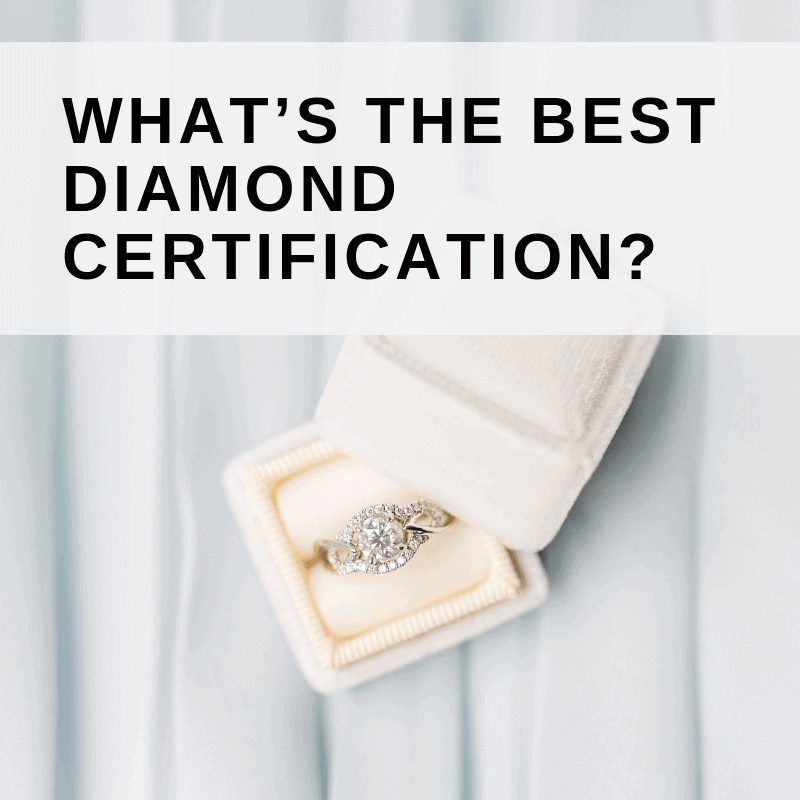- Zola vs MyRegistry: Which is the Best Registry for 2024? - November 30, 2023
- Best Art Deco Wedding Band Ideas - April 23, 2023
- Jade vs Emerald: Which Green Gemstone Is the One for You? - April 23, 2023
If you’re about to purchase an engagement ring for the love of your life, then you need to study up on diamond certifications. Luckily for you, we’re going to lay it all out for you in this blog post.
We’ll cover everything from what a diamond certification is, to what the best ones are. So, without further ado, let’s dive on in!
So, What’s a Diamond Certification?
Well, a diamond certification is a document that’s administered by a third party lab. This describes the properties of the rock and gives both the jeweler and the customer a better idea of its overall quality.
So, if you’re taking your diamond shopping seriously, you need to request a look at the papers that go alongside its lab certification.
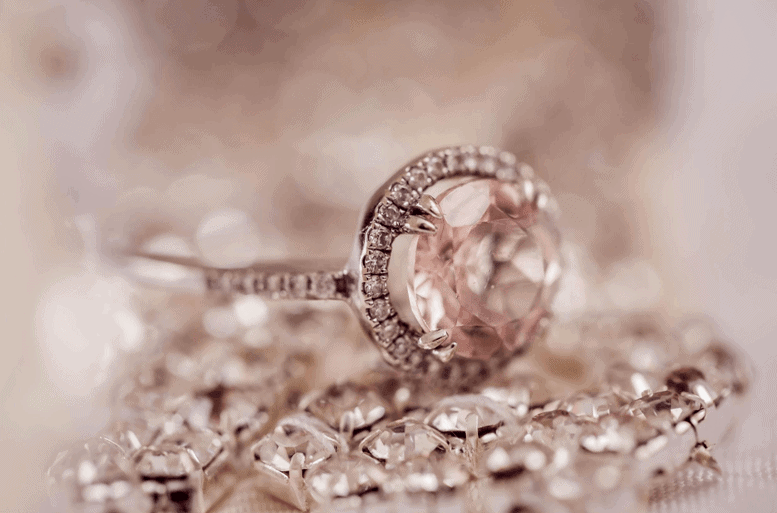
What if a Diamond Doesn’t Have a Certification?
If a diamond doesn’t have a certificate, there’s a good chance it’s “enhanced,” so the jeweler can charge more money for a mediocre product. The seller might be avoiding inspection, so the real properties of the gem remain a secret.
Unfortunately, poor quality diamonds are likely to erode over time. This is a massive issue for engagement rings because obviously, they need to go the distance.
What’s Included In an Official Certification?
The certificate usually highlights the following properties of the diamond:
- Color
- Clarity
- Length
- Width
Highly qualified experts evaluate their rocks using professional tools and methods. This is the only way to uncover the nitty gritty details of the gem.
Is There More Than One Grading System?
The short answer is, yes. The critical differences between certification labs usually surround their color and clarity grading methods. These two properties are by far the most subjective and therefore, are generally up for debate.
This makes it difficult to compare different grading agencies, especially when they use entirely different scales.
Despite that, in the last few years, there’s been a more significant movement towards standardization. More and more agencies aspire to mimic the grading scales created by the GIA (more on that later).
However, because there isn’t uniformity across the different certification labs, the results of diamond classification may vary depending on who analyzes the diamond.
Naturally, this is a concern, which is why you need to know which labs are reliable, and which ones aren’t.
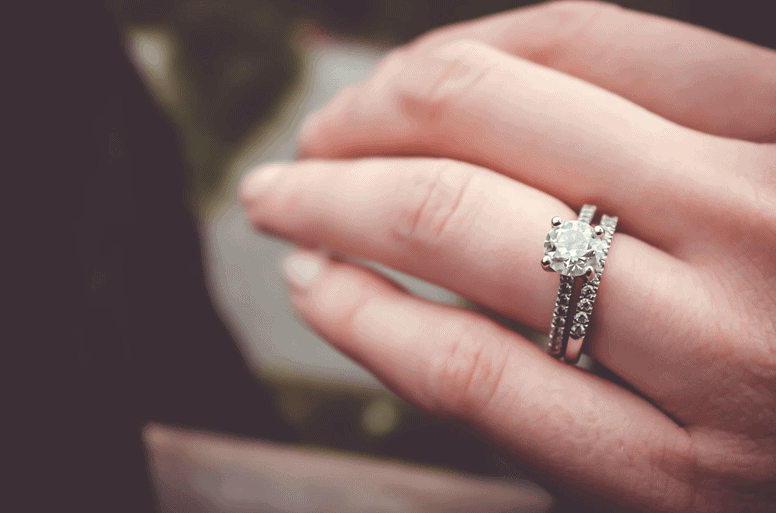
What Should I Look Out For?
Here are a few things to watch out for in this industry:
Consistency
According to The Diamond Pro, consistency is key! NEVER compare grades offered by different labs. Instead, research the consistency of the organization’s grading decisions.
This is essential because like we’ve just said, there isn’t a central organization that controls or scientifically defines the specific color grading or clarity of a diamond.
So, by this token, it’s perfectly reasonable for one lab to label the color one grade, and for another to class it as something completely different. As funny as this sounds, that’s fine- just so long as the lab remains consistent across the board!
Top Tip: Be aware of scams! Sometimes, labs deliberately label diamonds with a weak certificate but give it a higher price point. Not cool. In situations like this, it doesn’t matter how consistent their grading system is; you won’t get value for money.
Buyer Beware
In addition to the above advice, be cautious if you’re presented a diamond that comes with an old certificate (anything that’s more than three years old).
Classifying diamonds is an art that’s continually evolving, so what might have been graded as one thing seven years ago, may have drastically changed.
Plus, diamonds are prone to wear and tear. Over the years they accumulate scratches, chips, knocks, etc. Therefore, a diamond analyzed years ago won’t reflect any recent damage.
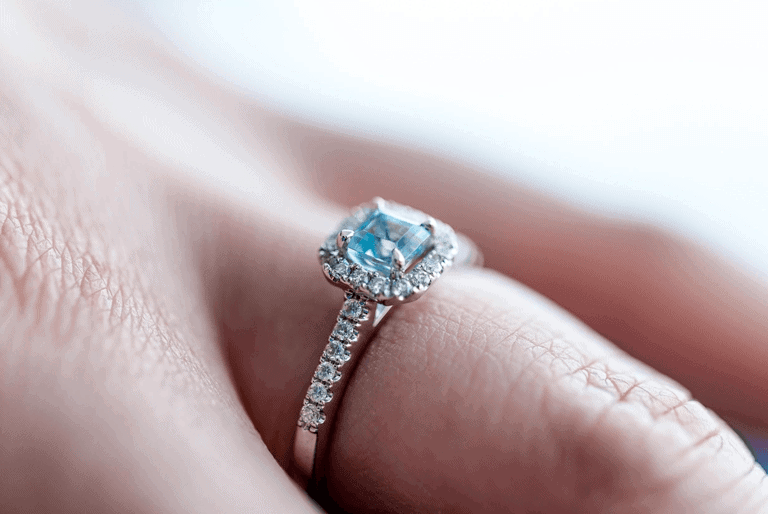
What’s an Appraisal and is Different to Certification?
As we’ve already discussed, a diamond’s certification takes into consideration the rock’s: color, cut, clarity, and weight. An official organization carries out this analysis and produces a certificate listing these details.
However, certification doesn’t extend to assigning a monetary value to the diamond. Whereas, the function of an appraisal is to give the stone a monetary value.
If you want the value of your rock, consult a third-party gemologist. This is the only way to get the most accurate results. Yes, you can plug your diamond’s certification into an online search engine, but it isn’t the best way of doing things.
Top Tip: If you’re thinking of selling your diamond to a jeweler, you should be aware they usually buy their stock at wholesale price. This is approximately 60% of the retail price, so be prepared to lop off around 40% of your total evaluation.
So, Who’s the Best Certification Lab?
With all that in mind, who offers the best certification? Here’s a quick evaluation of some of the most famous labs.
Gemological Institute of America (GIA)
The GIA is generally considered to be the most well-respected grading lab. They’re incredibly reliable, and provide consistent results across the board.
This is most likely because the GIA doesn’t have a financial stake in the sale of the diamond; they’re a non-profit organization. This certainly helps to keep everything above board.
They have an excellent reputation for the way they rate both Color and Clarity. These are the most subjective scales, and as such, the GIA make a massive point of studying them more rigorously.
They’re also famous for both their educational services and research in the gemological feed. This only adds to their prestige.
You can be confident the GIA keeps up to date with all the latest theories and technologies that grace the industry. This knowledge undoubtedly aids them when it comes to accurately grading their diamonds.
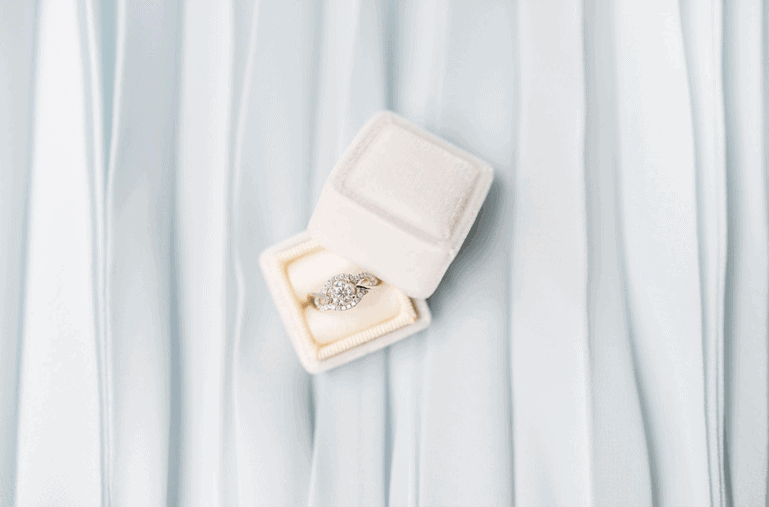
American Gemological Society (AGS)
AGS is most famous for their scientific methods and their thorough research into diamond grading. Interestingly, AGS doesn’t use an alphabetical system to rate their diamonds. Instead, they utilize a scale of 0-10 (0 being the highest quality, and ten being the worst).
Similarly to GIA, AGS also boasts high ethical standards. Their grading system is consistent, so they thoroughly deserve their place as the second most popular lab service in the USA, after GIA.
Unfortunately, AGS’ systems come across as a tad confusing, especially when you’re new to their certification methods. However, once you get the grip of things, it’s pretty straightforward.
European Gemological Laboratory (EGL)
Unsurprisingly, this certification lab was founded in Europe. However, it boasts an international presence. EGL is renown for developing grading methods for stones that weigh less than a single carat. However, their work is vastly inconsistent, which usually results in inflated quality claims for an inferior product.
Don’t be fooled by the alleged ‘deal’ you’re getting, because there’s a good chance you’re getting ripped off.
The Diamond Pro suggests you find a GIA certified diamond that’s two to three color grades below your EGL gem; this will ensure you get a better quality diamond for a lower price.

Hoge Raad voor Diamant (HRD)
This lab resides in Europe, and on the whole, it isn’t regarded as a decent alternative to the agencies listed above (well, in the States anyway). However, this hasn’t stopped it from becoming an authority in the industry, in other parts of the world.
According to The Diamond Pro, the HRD grading system demonstrates unforgivable inconsistencies. On the whole, they usually class their diamonds roughly two Color and Clarity classes above the GIA’s grading.
This results in higher priced diamonds that ensure the diamond companies make a whopping profit at the buyer’s expense- not cool.
Gemological Science International (GSI)
This new grading lab was established a few years ago. However, it’s failed to provide anything new or insightful. Instead, they focused on developing their business by building relationships with corporate U.S giants. Most notably, Jared The Galleria of Jewelry, Kay, and Zales.
Unfortunately, GSI grading is pretty loose- especially, in comparison to the terrific standards GIA and AGS have to offer. They’re even weaker than HRD! GSI’s consistency is shocking, making them incredibly unreliable. However, like before, this shoddy work makes the jewelry companies more money, at the consumer’s expense.
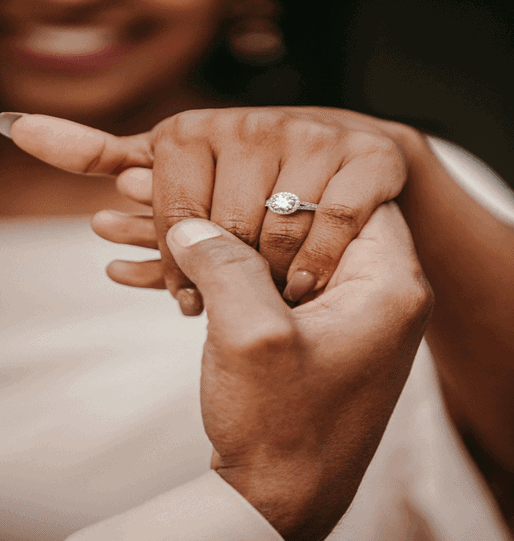
Final Thoughts
In conclusion, our best advice is to purchase a diamond with either an AGS or a GIA certificate. Like we’ve already said, consistency is essential when it comes to grading similar diamonds, and these labs excel in this area. Therefore, you can purchase your rocks confident in the knowledge that you’re getting the most bang for your buck!
P.S. If you liked this blog post, we’re confident you’ll love this feature we published not long ago: Diamond Alternatives for Modern Brides. Enjoy!
